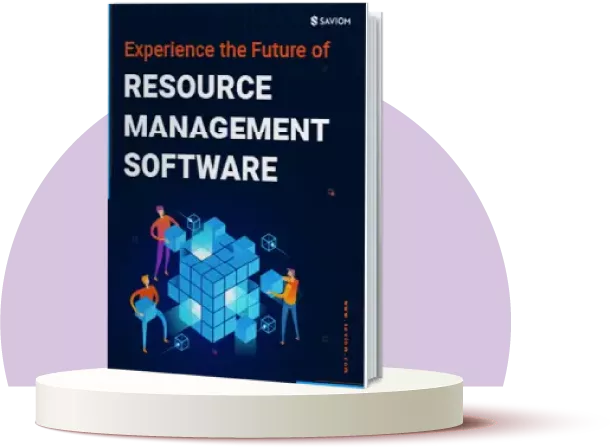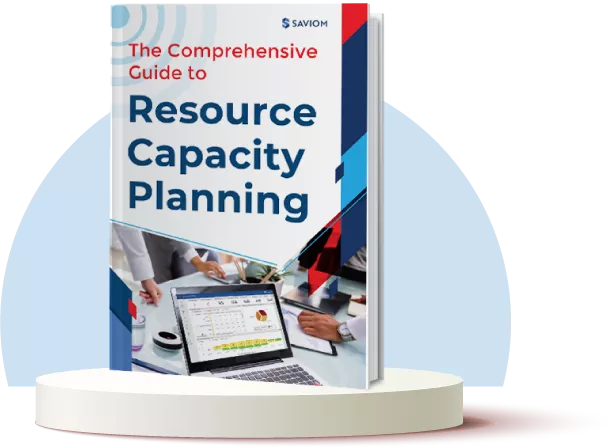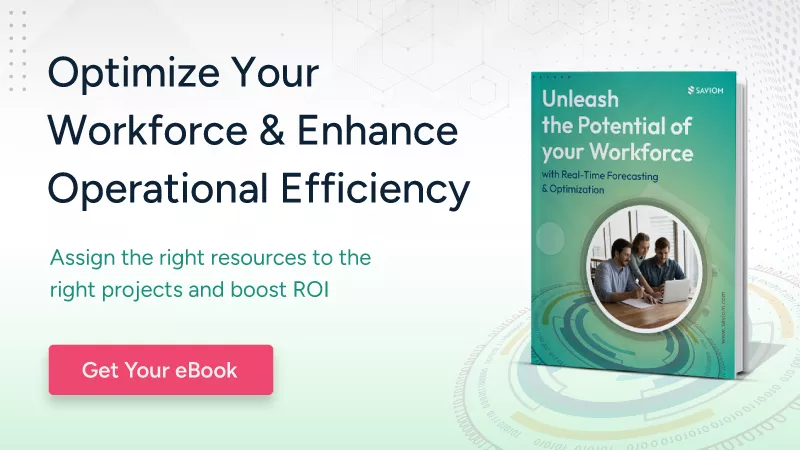A Gallup study states that “Organizations with robust talent management practices report 21% greater profitability and have highly engaged employees.”
Talent management is a holistic approach to managing and overseeing an organization’s most valuable assets- its people. It encompasses processes and strategies to attract, hire, train, deploy, and retain employees.
A well-structured talent management system keeps an organization ahead of the competition by ensuring skilled resources are available, and their performance is consistently maintained. Simply put, it helps create a motivated, committed, and productive workforce.
Read this blog to learn about the talent management best practices firms can implement to enhance business efficiency.
Let’s begin!
Significance of Adopting Effective Talent Management Strategies
Effective talent management strategies are crucial for organizations seeking a competitive edge. These strategies serve multiple purposes, each contributing to the company’s success.
First and foremost, robust talent management fosters higher levels of employee engagement and satisfaction. When employees feel valued, and their potential is recognized, they are more likely to be productive and innovative. This internal environment has a ripple effect, helping firms gain a positive employer brand reputation, which helps attract top talent from the external market.
Another benefit of robust talent management is its role in retaining key personnel within the organization. By identifying and nurturing high performers, companies can significantly reduce turnover rates, minimize recruitment costs, and ensure the continuity of valuable knowledge and skills.
This retention-focused approach is complemented by effective succession planning, a key aspect of talent management. By developing internal talent, firms build a pipeline of qualified individuals ready to take up leadership and critical roles as needed, thus ensuring long-term organizational stability and growth.
It’s important to note that talent management is a continuous process. By consistently refining and updating talent management strategies, companies can maintain their agility and competitiveness in an ever-changing business environment.
Now that you know the importance of adopting effective talent management strategies, let’s move toward the best practices.
Read More: What are the Benefits of Talent Management?
10 Talent Management Best Practices Firms Can Implement
Below are the ten best practices that managers can follow to improve their talent management strategy.
Align Hiring Strategies with Overall Business Goals
Each employee is a crucial investment, driving an organization’s growth and profitability. Thus, if the hiring strategy does not align with the overall business goals, it can result in a workforce with mismatched skills, leading to lost opportunities.
To avoid this, firms should first clearly define their long-term vision and tailor their recruitment process accordingly. This focused approach ensures that time and resources are invested in candidates who are not only skilled and competent but also aligned with the company’s mission, values, and long-term objectives.
Read More: How to Create an Effective Hiring Strategy?
Create a Strong Employer Brand in the Market
Building a strong employer brand is critical to attract top talent in the market. For starters, talent managers can define the company’s Employer Value Proposition and communicate a consistent brand message. They can use multiple platforms for their branding, such as the company website, social media, job boards, and career fairs.
Additionally, they can encourage employees to share their positive experiences as brand ambassadors. They must regularly track brand perception through surveys or social media monitoring and measure its impact on key metrics like application rates and employee retention.
Define Each Employee’s Roles & Responsibilities
Organizations should clearly outline the roles and responsibilities of each staff member to foster accountability and create a more collaborative work environment. Managers can craft detailed job descriptions for each role outlining the key duties and performance standards.
Having well-defined job roles helps employees understand how their work contributes to broader organizational goals. It also minimizes ambiguity and internal conflicts, resulting in better job satisfaction and performance. Thus, it helps augment workforce productivity, maximize efficiency, and boost employee engagement.
Read More: How to Effectively Delegate Responsibilities Across the Organization?
Design a Structured Onboarding Process for New Hires
A structured onboarding process helps create a systematic approach for integrating and familiarizing employees with their roles and overall organizational culture. Talent managers should create a detailed onboarding plan that outlines the various activities that the new recruits would undergo as they acclimatize themselves to their new environment.
It includes activities such as paperwork, orientation, training, socialization, etc. Supervisors can also assign a mentor or buddy who can help the employees settle down. This structured approach ensures a seamless transition and helps new hires feel accepted and welcomed.
Offer Skill Development Opportunities to Employees
As per a survey from SuvveyMonkey, “59% of employees say training improves their overall job performance.”
Organizations need to ensure that they are always equipped with a skilled workforce. So, to build a robust talent pipeline, they need to invest in appropriate learning and development programs. It includes offering IDPs, workshops, seminars, certifications, and shadowing opportunities to enhance employees’ existing skills or develop new ones.
Skill development enables resources to remain competent in their roles, adjust to changing job requirements, and contribute effectively to the company’s long-term success. Additionally, it boosts employee morale, loyalty, and retention as it demonstrates the organization’s commitment to supporting their skill development and professional growth.
Implement Diversity, Equity, and Inclusion (DEI) Initiatives
According to the EY survey, 63% of respondents across generations prioritize Diversity, Equity, and Inclusiveness (DE&I) when choosing one company over another.
Implementing DEI initiatives helps create a more holistic, inclusive, and fair workplace. Talent managers should begin by evaluating the current diversity levels and pinpointing areas where improvements can be made. Then, they should craft policies such as anti-harassment, equal pay policies, family-friendly, disability policies etc., that ensure equal opportunities and prevent discrimination.
They must thoroughly review practices and policies related to recruiting and promoting talent to make sure that employees from underrepresented groups have a fair chance.
Besides, organizations can establish employee resource groups (ERGs) and provide sensitivity training to all staff in order to eliminate unconscious bias from the workplace. Furthermore, regularly reviewing DEI goals and tracking progress will help companies foster accountability and create a highly competent workforce.
Develop Succession Planning for High-Potential Employees
As per a Deloitte study, “Companies that are among the best at talent management are 2.9 times more likely to identify and develop leaders.”
Succession plans are a critical part of a company’s strategic planning. It ensures seamless operations and business continuity in case of unexpected departure of senior or critical resources. To create a robust succession plan, talent managers can assess the internal channels and identify high-potential employees who can step into leadership roles.
Managers can provide them with targeted training, such as on-the-job and shadowing opportunities. These initiatives equip them with the right competencies needed for the new roles and support their professional growth. Ultimately, succession planning helps build a leadership pipeline that can take the company to new heights.
Recognize and Reward Employee’s Achievements
A recent Gallup survey indicated that around 41% of employees want to be recognized by a peer, and 37% want to be recognized by their managers
It’s vital for organizations to offer rewards and recognition to employees who demonstrate exceptional performance. The rewards can be in various forms, such as verbal praise, public acknowledgment, awards, bonuses, and promotions. Recognizing employees’ hard work enhances job satisfaction, loyalty, and productivity, thereby improving retention rates.
For instance, in a manufacturing company, top-level management could publicly recognize the employees who exceeded production targets and award them a bonus for their accomplishments. This not only rewards the employees but also motivates others to improve their performance. This, in turn, increases the company’s productivity and ROI.
Read More: Employee Recognition Programs: Types, Benefits and Best Practices
Invest in a Robust Performance Management System
A robust performance management system enables talent and HR managers to centralize staff data and track the performance of every employee. These solutions enable supervisors to set and track employee goals, define performance metrics, analyze expected vs. actual performance, and share feedback in real-time.
The system helps organizations to standardize their appraisal practices while ensuring that they align with key business goals. It also allows them to leverage data-driven insights to accurately quantify the value of the organizational workforce and reward them accordingly.
Regularly Review & Update Your Talent Management Strategy
Companies should regularly review their talent management strategy to ensure it aligns with evolving business requirements and market dynamics. It allows them to identify areas for improvement, address any gaps, and adapt to new challenges and opportunities.
Furthermore, periodic retrospection helps firms stay abreast of industry trends and technological advancements, which can have a major impact on future skill requirements. Therefore, this proactive approach ensures that the talent management strategy remains relevant and effective in supporting the organization’s strategic objectives.
Bottomline
Adopting effective talent management is paramount for organizations aiming to thrive in today’s competitive business landscape. These strategies help firms attract, develop, and retain top talent, fostering a motivated and high-performing workforce.
By adhering to the best practices mentioned above, managers can efficiently implement effective talent management processes, which will enhance employee engagement, drive productivity, and ultimately contribute to the organization’s long-term success and competitive edge.
So, how do you ensure effective talent management in your firm?
The Glossary
Read more: Glossary of Resource Workforce Planning, Scheduling and Management
The SAVIOM Solution
SAVIOM is undoubtedly the market leader in offering the most powerful and configurable Enterprise Resource Management Solution. Having more than 20 years of experience, this Australian-based MNC has a global presence in over 50 countries. It is also popular with more than 100 customers and helps them to achieve their business goals. SAVIOM also has products for project portfolio management, professional service automation, and workforce planning software which can be easily customized per business requirements.









